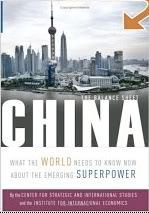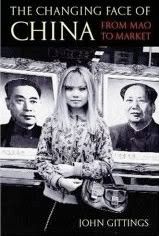China and the Future of the Capitalist World Economy

Comments on Interview with István Mészáros
by Minqi Li
The rise of China as a major player in the capitalist world economy is likely to become one of the most significant developments in the first half of the twenty-first century. After more than two decades of consistently rapid economic growth, calculated at purchasing power parity, China now accounts for 12 per cent of world output and stands as the world’s second largest economy in the world. China is emerging as the centre of world manufacturing exports and has been playing a crucial role in financing the U.S. current account deficit.
Some speculate that China might replace the U.S. and become the next hegemonic power. For instance, Giovanni Arrighi places much hope on the renaissance of Chinese civilization and hopes that the re-emerging China-centred civilization would provide system-level solutions to the system-level problems left behind by U.S. hegemony, and lead the transformation of the modern world into a commonwealth of civilizations. István Mészáros, in his interview, expressed the hope that “China is the power which can put up resistance against this American domination.”
Several questions can be raised. First, there is the question of how China’s internal social relations of production and class structure have evolved over the past quarter century. Second, there is the question how China’s rising importance in the capitalist world economy would affect the current and future operations of the existing world system. Third, there is the question of to what extent China’s current transformation could prepare the conditions for future revolutionary changes within China as well as in the world.
Capitalist Development in China
István Mészáros is quite correct in pointing out that it is impossible for China to become a “big capitalist country” in the sense that the existing world system cannot accommodate China’s rise into the rank of core states. However, this is a question quite separate from how China’s internal social relations of production have evolved and of what has become the nature of these relations.
In short, over the past quarter of century, through successive class struggles, the Chinese worker and peasants have largely lost the extensive social and economic rights that they once had during the years of Maoist revolutionary socialism, and China’s socio-economic system has undergone fundamental changes. The state sector now accounts for no more than one-third of the national output, and state-sector workers have been largely reduced to wage workers under the constant threat of unemployment. The rest of the economy has been dominated by production for profit and wage labour relations. The fact that the Chinese government imposes “a political regulation” that ensures “this absurdly cheap labor” does not make the Chinese economy any less capitalist. On the contrary, it only demonstrates the collaboration between the Chinese state and trans-national capital, and the political weakness of the Chinese working class at the present moment.
However, the expansion of Chinese capitalism is not without contradictions. In fact, it could have very de-stabilizing effects on the existing world system in the coming decades.
China at the Centre of Global Capitalist Instability
The capitalist “reform” has led to growing inequality in income and wealth distribution and absolute pauperization among large sections of the working people. As the working people’s real income stagnates, mass consumption lags behind the pace of economic growth, and the expansion of the Chinese economy has become increasingly dependent on foreign investment and exports, especially exports to U.S. markets.
China’s export-led growth strategy has greatly intensified global over-production and increased competitive pressures on the rest of the periphery. As China’s huge surplus labour force is added to the global reserve army of labour, it has undermined the bargaining power of working classes in many countries.
Under the neo-liberal regime, the global economy has tended to stagnate and has been characterized by growing instability. The global economy has not sunk into a vicious downward spiral, largely because the U.S. economy, given its hegemonic position, has managed to grow at a relatively rapid pace, pumping demand into the rest of the world economy. The imbalances in the global growth structure have resulted in the ever-growing current account deficits in the U.S. The deficit now stands at 5.7 per cent of U.S. GDP and, if the current trend continues, the U.S. net foreign debt could reach 40–50 per cent of GDP by 2008, and more than 300 per cent of exports. The U.S. already absorbs about 80 per cent of the global surplus savings. As the U.S. current account deficit keeps growing, private capital inflows have become increasingly inadequate and Asian central banks have played an increasingly crucial role in financing the deficit (see Stephen Roach, September 27, 2004).
Among Asian economies, China has played a central role. With its large cheap labour force, China has become the centre of Asian export accumulation. China’s foreign exchange reserves reflect not only trade surpluses, but also capital inflows from other Asian economies, such as Japan, Korea, Taiwan, and Hong Kong. China’s central bank is in effect re-channelling Asian surplus savings into dollar-denominated assets.
As the Chinese central bank accumulates foreign exchange reserves, it generates money supply leading to credit explosion in the bank sector that in turn results in speculative investment boom and property bubbles. China’s investment boom cannot be sustained as it results in huge excess capacity and has created bottlenecks in several key commodities, such as food and oil, driving up their prices. Given China’s central role in the Asian export regime, as the bubble collapses, it could bring down not only the Chinese economy, but also other Asian economies that depend on exports to China for growth. With the huge excess capacity that would be left over with the bursting of the bubble, the global economy may sink into deflation. Alternatively, if major central banks attempt to ease the global recession with loose monetary policies, rising oil and food prices could lead to global stagflation.
As the global imbalances and U.S current account deficits keep growing, the global economy is confronted with increasingly larger and more destructive bubbles. It seems that China has become the epicentre of the latest round of global instability. In the words of Stephen Roach, the chief economist of Morgan Stanley, “with the world’s growth dynamic now being effectively driven by just one consumer– America– and just one producer– China– the odds are growing short that such an increasingly tenuous arrangement can be sustained. China is probably the weakest link in this chain.” Let us watch if the Chinese capitalism and the neo-liberal global regime can survive such increasingly destructive bubbles and crises.
Environmental Limits to Accumulation
Capitalist development in China has brought about not only social destructions but also resource depletion and environmental degradations. According to Lester R. Brown, the director of the Earth Policy Institute, “China is exceeding the carrying capacity of its ecosystems– overplowing its land, overgrazing its rangelands, overcutting its forests, overpumping its aquifers.” As water shortage and soil erosion become increasingly serious, China’s grain production will continue to stagnate and will decline, threatening to drive up world food prices.
China’s rapid accumulation has deepened the world energy crisis. China’s oil consumption is expected to double in the coming decade. Taking into account the effects of China’s consumption of oil on oil prices, China may have to spend $300 billion to import crude oil and related products by 2014, acting as a huge drag on the Chinese economy. China is rapidly catching up with the U.S. to become the largest emitter of green house gases, and the leading contributor to one of the greatest global environmental problems– global warming. The potentially destructive implications on the global environment and the global geopolitics are difficult to predict (see Andy Xie, May 24, 2004).
In this sense, it is very correct for István Mészáros to argue that “when you think of the development of Chinese capitalist interchange with the rest of the world, it is not tenable for the capitalist side, it is not tenable to let this go on indefinitely... that could only be a disaster for all of us.”
Socialism or Barbarism?
Since the early 1980s, under the name of “market reforms,” China has gradually adopted the capitalist model of development based on the exploitation of the broad masses of working people, dominance of foreign capital, and dependence on exports to foreign markets. Despite rapid economic growth, such a model has produced growing economic, social, and environmental contradictions. Even if Chinese capitalism can survive the destructive consequences of the coming global economic crisis, it would not be long before it meets the environmental limits to accumulation.
Capitalist development in China has produced striking social polarizations, and increasingly large sections of the working people are suffering from absolute pauperization. The social bases for capitalist development have become increasingly narrowed as the “market reforms” proceed. The growing social contradictions have been reflected in the ideological field. Sections of the Chinese intellectual class have offered, to different degrees, criticisms of free market, capitalism, and imperialist domination. This is in contrast to the ideological conditions in Eastern Europe and China before 1989, where independent intellectuals were overwhelmingly influenced by neo-liberal ideas.
As China experiences rapid industrialization and urbanization, China’s class structure is being fundamentally transformed. The share of the proletarian and semi-proletarian wage workers in the total population have substantially increased. The past historical experience suggests that as the degree of proletarianization rises, the proletarian and semi-proletarian workers are likely to demand a growing range of political and social rights. These demands could impose growing pressures on China’s regime of capital accumulation.
In the future, if the emerging anti-capitalist critical intellectuals can join force with the growing resistance struggle of the Chinese working class, then it may not take long before a powerful revolutionary socialist force re-emerges in China. Given China’s huge size in population and territory, a revolutionary change on China’s political stage could have enormous global implications. ***
Minqi Li, Assistant Professor, Department of Political Science, York University, Toronto, Canada.
Link




0 Comments:
Post a Comment
Subscribe to Post Comments [Atom]
<< Home